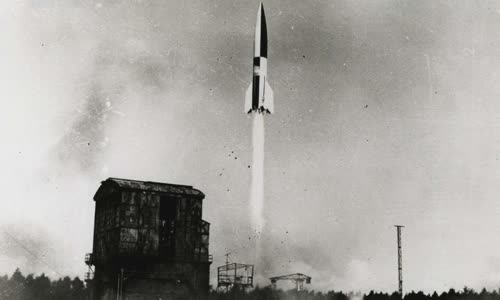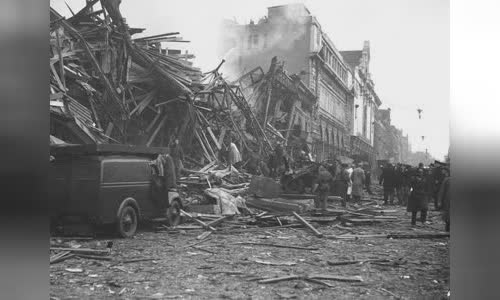On the morning of September 8, 1944, a large explosion rocked the southeastern suburbs of Paris, caused by the V-2, the world's first guided ballistic missile.
This Nazi attack left 6 people dead and 36 injured, not long after the French capital was liberated.

The German army launched a V-2 missile on October 3, 1942 Photo: NASM
An explosion in London created a hole nearly 2.5 m deep, the mouth wider than 9 m.
However, hundreds of explosions over the next few weeks forced British officials to admit to the fact that the Nazis launched V-2 missiles, a new weapon, into the country and France.
Development of the V-2 began in 1934. The Wehrmacht was very interested in missiles.
The V-2 missile was tested successfully for the first time in October 1942.
At that time, the fascist tycoon Adolf Hitler was angry with the Allies bombing devastating Germany, so he wanted to attack the cities of these countries for revenge.
About 6,000 V-2 missiles have been built.
The V-2 missile is complex and much larger in size than the V-1, a project previously developed by the Nazis.
The V-2's high speed and speed makes them an interceptable missile.
In nearly a year, more than 3,000 V-2 missiles hit military and civilian targets in Belgium, Great Britain, France and the Netherlands, equivalent to about 100 missiles launched per day.

A market in London, England, was destroyed after being hit by a V-2 missile on March 8, 1945 Photo: AP
A missile hit the crowded cinema in the Belgian port city of Antwerp, killing 567 people, including 296 Allied soldiers.
It is estimated that the attacks of the V-2 missiles have killed 5,000-9,000 people.
In desperation of not being able to stop the attacks, the Allies launched Operation Magic Cross, which included a series of operations and a bombing campaign aimed at destroying the V weapons program.
In the end, like other "miraculous" weapons by the Nazis, the V-2 missile still could not help the Nazis save the situation.
The German army spent so much budget and resources on the V-2 project just to reap minimal military benefits, to the point that Freeman Dyson, an analyst with the RAF during World War II,
However, the V-2 missile has a longstanding legacy.
The Soviet Union and Western countries rushed to gather as much data as possible about the V-2 program after the war ended.
Many of the scientists involved in the development of the V-2, including rocket expert Wernher von Braun, who led the project, later traveled to the US as part of Operation Paperclip, planning to recruit more than 1,600 scientists.



 Marcia Libosada
Marcia Libosada







